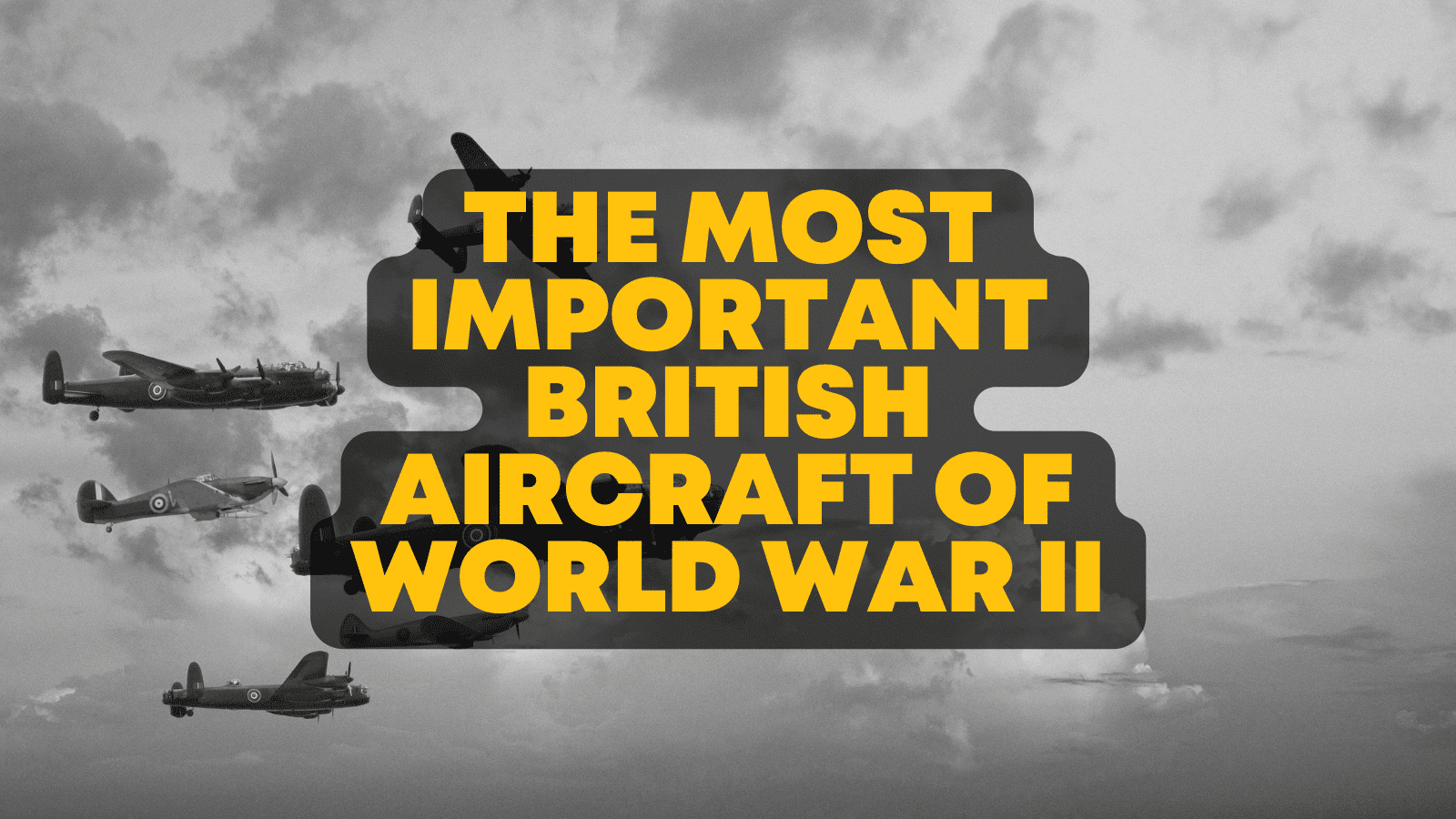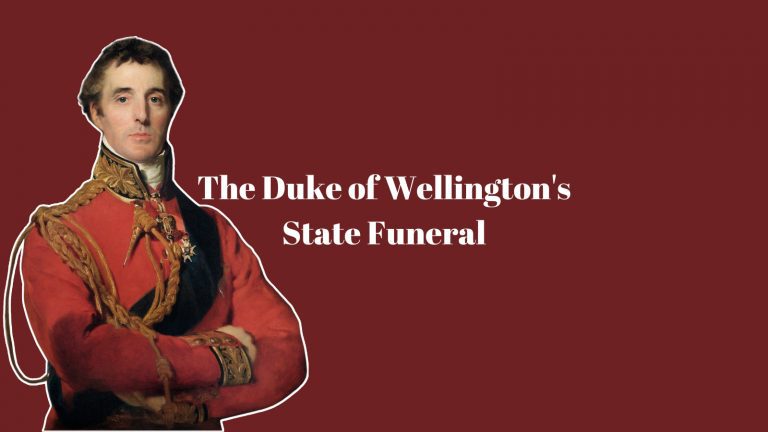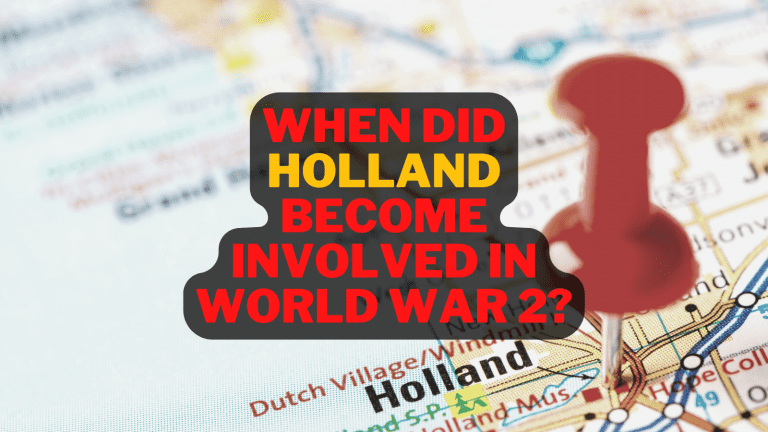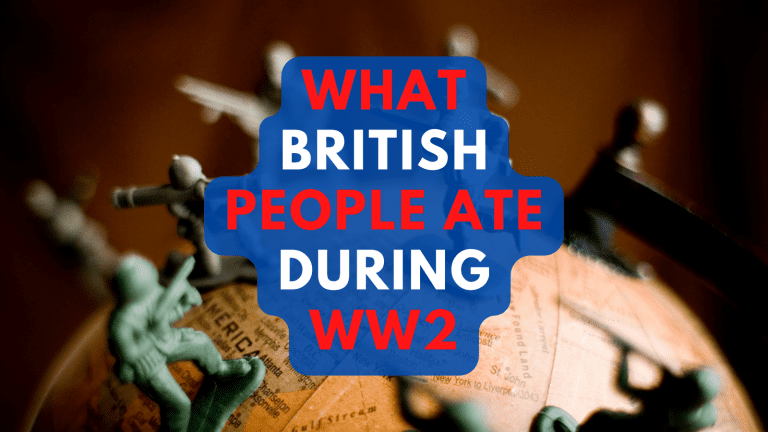The Most Important British Aircraft of World War II
The role of the RAF in the Second World War was pivotal in achieving victory over the Axis powers. But when the war first broke in September of 1939, the RAF was vastly underprepared and outnumbered. With only 2000 aircraft readily available at the start of the war, it became increasingly clear that battles at land and sea would need substantial air support in order to be successful.
It quickly became clear there was a shortage of materials to build the number of aircraft needed to withstand the German forces. On the 10th of July 1940, a plea was made in newspapers up and down the country. The request was simple; it asked the public to give up any spare aluminium to combat the incoming German Luftwaffe for the war effort. Saucepans, railings, tin cans, and gates were donated to the RAF in hopes they would be helpful, a true show of how desperate the RAF was for resources. From the mid-1930s, the RAF was producing new, faster, and more powerful aircraft in both fighter and bomber designs.
Which were the most important British aircraft of World War 2?
[/et_pb_text][/et_pb_column][/et_pb_row][et_pb_row _builder_version=”4.14.8″ _module_preset=”default” global_colors_info=”{}”][et_pb_column type=”4_4″ _builder_version=”4.14.8″ _module_preset=”default” global_colors_info=”{}”][et_pb_text _builder_version=”4.14.8″ _module_preset=”default” global_colors_info=”{}”]Supermarine Spitfire
[/et_pb_text][/et_pb_column][/et_pb_row][et_pb_row _builder_version=”4.14.8″ _module_preset=”default” column_structure=”1_5,3_5,1_5″][et_pb_column _builder_version=”4.14.8″ _module_preset=”default” type=”1_5″][/et_pb_column][et_pb_column _builder_version=”4.14.8″ _module_preset=”default” type=”3_5″][et_pb_image src=”http://historywithhenry.com/wp-content/uploads/2022/03/1-2.png” _builder_version=”4.14.8″ _module_preset=”default” alt=”The Most Important British Aircraft of World War II” title_text=”1″ hover_enabled=”0″ sticky_enabled=”0″][/et_pb_image][/et_pb_column][et_pb_column _builder_version=”4.14.8″ _module_preset=”default” type=”1_5″][/et_pb_column][/et_pb_row][et_pb_row _builder_version=”4.14.8″ _module_preset=”default” global_colors_info=”{}”][et_pb_column type=”4_4″ _builder_version=”4.14.8″ _module_preset=”default” global_colors_info=”{}”][et_pb_text _builder_version=”4.14.8″ _module_preset=”default” global_colors_info=”{}”]The first time the RAF got to truly flex its muscles in the war was in the Battle of Britain, where it showed its worth and then some. Spanning three months, fought almost entirely in the air, British Spitfires and Hurricanes fought German Luftwaffe in the skies above the United Kingdom.
The best known and most celebrated aircraft from the war is the Supermarine Spitfire, symbolic of British war pride and power because of its strategically important role in the Battle of Britain; it was designed in 1934 by Reginald Mitchell.
In the skies above Britain, the Spitfire had the best win to loss ratio of all British aircraft in the war. Its high speeds, excellent handling for pilots, and high-altitude ceiling meant the Spitfire could outmaneuver the invading German forces and deal devastating blows of damage. For these reasons, the aircraft was used in many more battles, from attacking German forces in Normandy to defending British territory in the North African theatre. The Spitfire was produced until 1947, when production ended more than 20,300 had been manufactured, more than any other British aircraft.
The Hawker Hurricane also played a key role in the Battle of Britain; in fact, they were more numerous in the battle than their Spitfire counterparts.
The Spitfire often gets all the glory, but the Hurricane was the workhorse.
Designed by Sydney Camm in 1935 and introduced to the RAF in 1937, 14,400 were produced in the UK and Canada until production was ceased in 1944. It was the most lethal British aircraft of the early war, but an aircraft’s significance is not solely tied to its killing ability.
Reconnaissance was equally as crucial to the success of the war. This was an important development of the Hurricane as the war progressed, and Spitfires took their place in the dogfights. Several Hurricanes were converted in 1941 by RAF services in Egypt for photo-reconnaissance for the intelligence services in the North African battlefield.
[/et_pb_text][/et_pb_column][/et_pb_row][et_pb_row _builder_version=”4.14.8″ _module_preset=”default” global_colors_info=”{}”][et_pb_column type=”4_4″ _builder_version=”4.14.8″ _module_preset=”default” global_colors_info=”{}”][et_pb_text _builder_version=”4.14.8″ _module_preset=”default” global_colors_info=”{}”]De Havilland Mosquito
[/et_pb_text][/et_pb_column][/et_pb_row][et_pb_row _builder_version=”4.14.8″ _module_preset=”default” global_colors_info=”{}”][et_pb_column type=”4_4″ _builder_version=”4.14.8″ _module_preset=”default” global_colors_info=”{}”][et_pb_text _builder_version=”4.14.8″ _module_preset=”default” global_colors_info=”{}”]The De Havilland Mosquito, known affectionately as the ‘Wooden Wonder’ or ‘Mossie’ was designed in 1938 by Geoffrey de Havilland from a unique wooden frame. The Mosquito was another aircraft that showed versatility as its bombing and reconnaissance abilities were crucial to the British attack and understanding of the Nazi forces. Flown in special raids like Operation Jericho, Mosquito aircrafts helped to free Allied soldiers from Amiens Prison in Nazi-occupied France by blowing holes in the walls. They also featured as party crashers as they interrupted Hermann Goering’s speech celebrating the 10-year anniversary of Hitler’s rise to power. This ability to drop bombs and deal industrial and economic blows was equally as important as shooting down enemy aircraft.
[/et_pb_text][/et_pb_column][/et_pb_row][et_pb_row _builder_version=”4.14.8″ _module_preset=”default” global_colors_info=”{}”][et_pb_column type=”4_4″ _builder_version=”4.14.8″ _module_preset=”default” global_colors_info=”{}”][et_pb_text _builder_version=”4.14.8″ _module_preset=”default” global_colors_info=”{}”]Avro Lancaster
[/et_pb_text][/et_pb_column][/et_pb_row][et_pb_row _builder_version=”4.14.8″ _module_preset=”default” column_structure=”1_5,3_5,1_5″][et_pb_column _builder_version=”4.14.8″ _module_preset=”default” type=”1_5″][/et_pb_column][et_pb_column _builder_version=”4.14.8″ _module_preset=”default” type=”3_5″][et_pb_image src=”http://historywithhenry.com/wp-content/uploads/2022/03/2-2.png” _builder_version=”4.14.8″ _module_preset=”default” alt=”The Most Important British Aircraft of World War II” title_text=”2″ hover_enabled=”0″ sticky_enabled=”0″][/et_pb_image][/et_pb_column][et_pb_column _builder_version=”4.14.8″ _module_preset=”default” type=”1_5″][/et_pb_column][/et_pb_row][et_pb_row _builder_version=”4.14.8″ _module_preset=”default” global_colors_info=”{}”][et_pb_column type=”4_4″ _builder_version=”4.14.8″ _module_preset=”default” global_colors_info=”{}”][et_pb_text _builder_version=”4.14.8″ _module_preset=”default” global_colors_info=”{}”]The best-known British bomber of the Second World War was the Avro Lancaster, designed in 1937 and introduced into RAF service in February 1942. 7300 Lancasters played a crucial role in the strategic bombing of German cities as they had spacious bomb bays that allowed more damage to be done per run than other British bombers.
One of the most famous raids carried out by Lancaster aircraft was the destruction of the Mohne, Eder, and Sorpe dams in the cover of night in May of 1943. Better known as the Dambusters raid. A special squadron, 617, was formed under the command of Guy Gibson for the raid. It resulted in the destruction of critical German hydroelectric power stations and the flooding of mines and factories downstream.
The spacious bomb bays also allowed for enormous explosives to be loaded into Lancasters, including the Grand Slam Earthquake bombs that fell with the force of 6.5 tons of TNT, enough to penetrate 6 meters of concrete. Despite its success, the history of the Lancaster is not without tragedy as it suffered the highest casualty rate of any branch of British Services in the war, and as such, its crew’s average age was just 22 years old.
[/et_pb_text][/et_pb_column][/et_pb_row][et_pb_row _builder_version=”4.14.8″ _module_preset=”default” global_colors_info=”{}”][et_pb_column type=”4_4″ _builder_version=”4.14.8″ _module_preset=”default” global_colors_info=”{}”][et_pb_text _builder_version=”4.14.8″ _module_preset=”default” global_colors_info=”{}”]Handly Page Halifax
[/et_pb_text][/et_pb_column][/et_pb_row][et_pb_row _builder_version=”4.14.8″ _module_preset=”default” global_colors_info=”{}”][et_pb_column type=”4_4″ _builder_version=”4.14.8″ _module_preset=”default” global_colors_info=”{}”][et_pb_text _builder_version=”4.14.8″ _module_preset=”default” global_colors_info=”{}”]Another aircraft that was crucial to the bombing raids carried out by the RAF was the Halifax. 6170 Halifax aircraft were produced from 1940-46. It was used by the RAF, Royal Canadian Air Force, Royal Australian Air Force, and Free French Air Force during the war.
Introduced in November 1940, Halifax’s were used to perform night bombing raids in Germany; in total, they dropped more than 224,000 tons of bombs. But Arthur Harris, the air officer commander in chief of the Bomber Command, called them inferior to the Lancaster that were faster and could carry more weight.
[/et_pb_text][/et_pb_column][/et_pb_row][et_pb_row _builder_version=”4.14.8″ _module_preset=”default” global_colors_info=”{}”][et_pb_column type=”4_4″ _builder_version=”4.14.8″ _module_preset=”default” global_colors_info=”{}”][et_pb_text _builder_version=”4.14.8″ _module_preset=”default” global_colors_info=”{}”]Vickers Wellington
[/et_pb_text][/et_pb_column][/et_pb_row][et_pb_row _builder_version=”4.14.8″ _module_preset=”default” global_colors_info=”{}”][et_pb_column type=”4_4″ _builder_version=”4.14.8″ _module_preset=”default” global_colors_info=”{}”][et_pb_text _builder_version=”4.14.8″ _module_preset=”default” global_colors_info=”{}”]Also finding itself inferior and being replaced by the Lancaster as the war progressed was the Wellington. Designed in the mid-1930s by Barnes Wallis and Reginald Pierson, they debuted in the RAF as war broke. Less than 24 hours after the outbreak of war, the Wellingtons were used to target German shipping resources at Brunsbuttel. As time went on, battles like the Battle of Heligoland Bight where 12 of 24 Wellingtons were destroyed, highlighted their vulnerability to German fighter aircraft. Despite this, Wellingtons were manufactured right through the war, with a total of 11461 being constructed in 11 years.
[/et_pb_text][/et_pb_column][/et_pb_row][et_pb_row _builder_version=”4.14.8″ _module_preset=”default” global_colors_info=”{}”][et_pb_column type=”4_4″ _builder_version=”4.14.8″ _module_preset=”default” global_colors_info=”{}”][et_pb_text _builder_version=”4.14.8″ _module_preset=”default” global_colors_info=”{}”]Short Stirling
[/et_pb_text][/et_pb_column][/et_pb_row][et_pb_row _builder_version=”4.14.8″ _module_preset=”default” column_structure=”1_5,3_5,1_5″][et_pb_column _builder_version=”4.14.8″ _module_preset=”default” type=”1_5″][/et_pb_column][et_pb_column _builder_version=”4.14.8″ _module_preset=”default” type=”3_5″][et_pb_image src=”http://historywithhenry.com/wp-content/uploads/2022/03/3-2.png” _builder_version=”4.14.8″ _module_preset=”default” alt=”The Most Important British Aircraft of World War II” title_text=”3″ hover_enabled=”0″ sticky_enabled=”0″][/et_pb_image][/et_pb_column][et_pb_column _builder_version=”4.14.8″ _module_preset=”default” type=”1_5″][/et_pb_column][/et_pb_row][et_pb_row _builder_version=”4.14.8″ _module_preset=”default” global_colors_info=”{}”][et_pb_column type=”4_4″ _builder_version=”4.14.8″ _module_preset=”default” global_colors_info=”{}”][et_pb_text _builder_version=”4.14.8″ _module_preset=”default” global_colors_info=”{}”]The Stirling was designed by the Short Brothers, an aerospace company based in Belfast. Introduced in 1940, the Stirling flew for the RAF and Egyptian Air Force until 1945, when the 2371st and final aircraft was built.
Built as bombers, they were praised for their favourable handling, but many highlighted its low altitude ceiling that constricted pilots flying ability. Towards the end of the war, they were used instead to deploy Allied ground forces – most notably in the Battle of Normandy. The crucial battle allowed Allied forces to regain a foothold on the continent as tens of thousands of soldiers dropped on the beaches.
[/et_pb_text][/et_pb_column][/et_pb_row][/et_pb_section]






